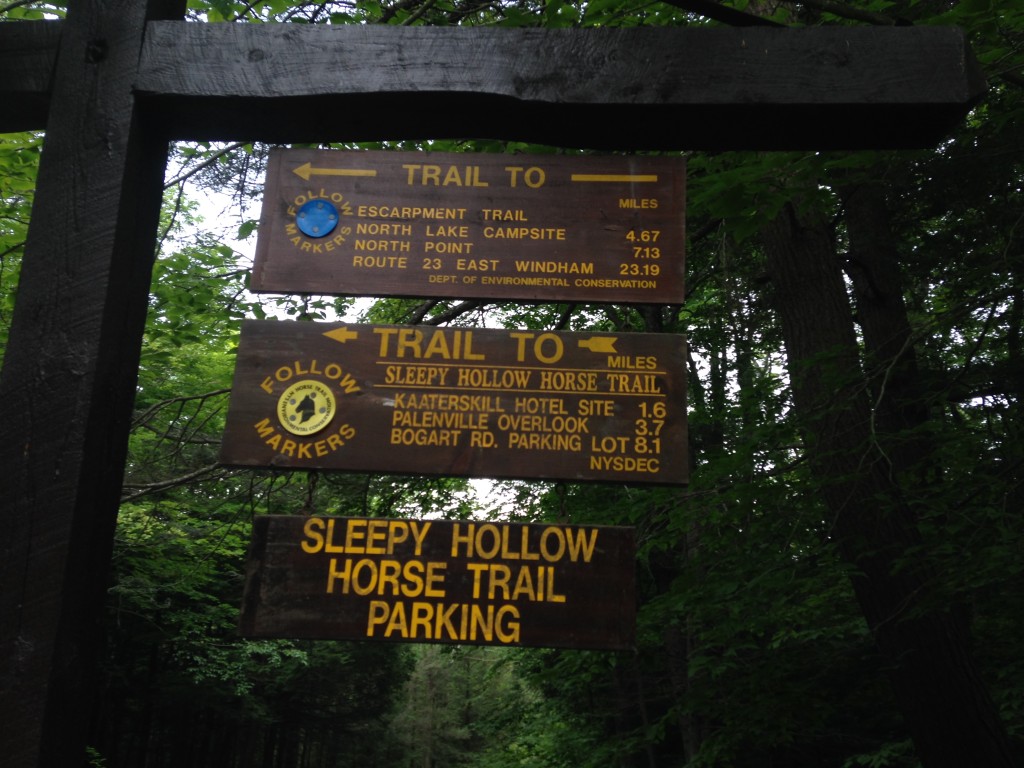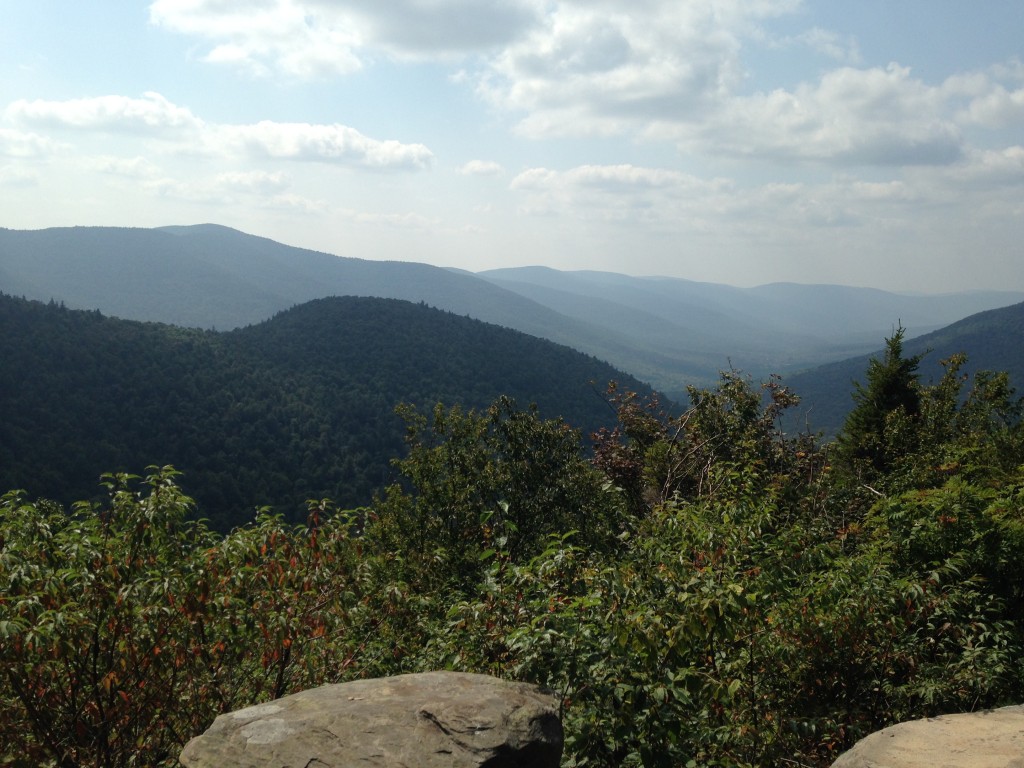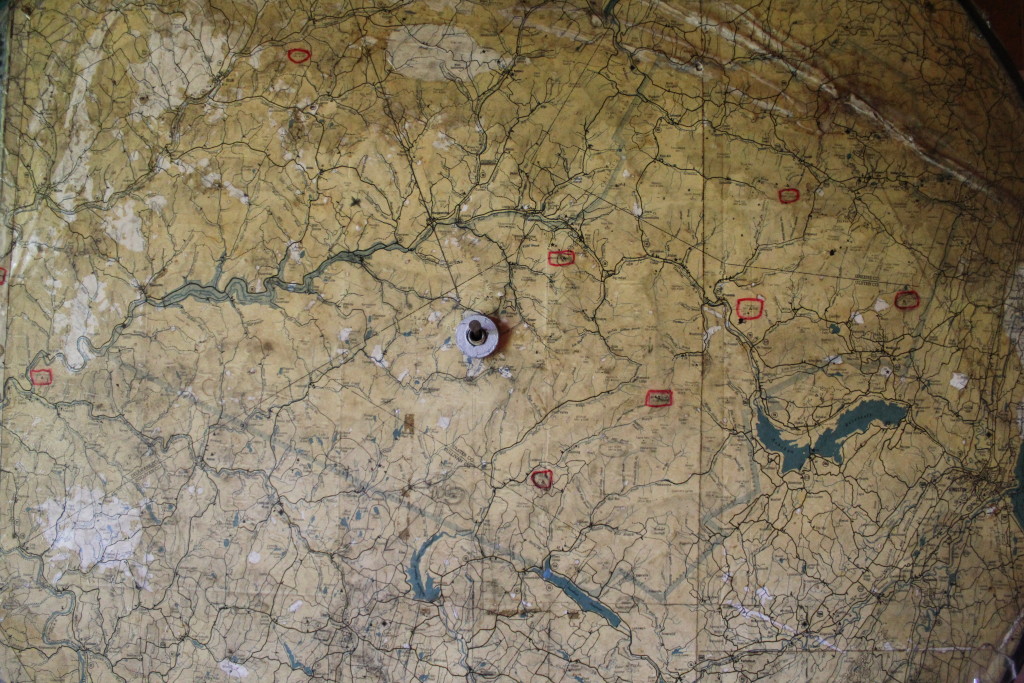A few years ago, a tourist website ran an article about one of our swimming holes in the shadow of a mountain peak.
I’m doing the Catskill 35, so I’ve hiked the mountain under which the hole rests, but never used the hole itself. Why? Because since publication of the article, day-tripping tourists have returned year after year and used the site like their own personal kitchen, bedroom and toilet. They literally, eat, shoot and leave. We find used condoms, diapers and the empty contents of an average kitchen: huge containers of olive oil, bread wrappers, beer bottles, wine bottles, spent coals, styrofoam coolers, plastic containers and much more.
Kind spectators of the Sunday night scene at this hole have diplomatically said that city people “don’t realize there’s nobody to clean up after them”, but I’m a born and bred city girl and well accustomed to garbage cans. As a rule, if there’s no garbage can around, I put it in my pocket or backpack.
Visitors should know that our beauty spots are now being cleaned up by saintly volunteers, people who live here, not paid members of The Sanitation Department.
Question: You’re hiking through the forest and you get a bit peckish, so you get out a granola bar while you’re skipping along. Do you:
a. eat the wrapper?
b. throw the wrapper into the forest?
c. put the wrapper in your backpack and take it home?
Question: You’re changing your baby’s diaper. Do you:
a. eat the dirty diaper?
b. throw the diaper in the river?
c. put the dirty diaper back in the car and take it home?
If you answered C to both questions you are correct, but it’s astonishing how many people would pick B. The Catskills operates a LEAVE NO TRACE policy. Our motto is “take only pictures. Leave only footprints”. I challenge anyone to find a cuter motto than that and if you stick to this rule you can’t go far wrong.
Here’s some other useful tips to “hike nice” from the Catskill 3500 Club and DEC.
Garbage & Waste
Take all your garbage with you. Bury all feces in a hole, six inches deep at least 150 feet from a water source. DO NOT: just drop a fat log right by the trail. I’ve encountered this twice and it’s pretty disgusting. A friend’s dog once ate someone’s fat log at the side of the trail. DO: bring a plastic bag for used toilet paper. Yes, bears shit in the woods, but they have the privilege of being part of the ecosystem. Hikers do not.
Tips: if you have a dirty diaper you can bury the feces. Stuff some old pine needles or sprinkle some fresh dirt in the diaper before you wrap it up and put it in your backpack. This will cover the smell. You might also put your own used toilet paper in the dirty diaper.
Tip 2: Bring citrus fruits or herbs like mint or thyme. Lemon or lime juice is a naturally anti-bacterial and freshens up your water on a hot day. Throw the herbs or peel in the backpack on the way back to mask any odors.
Hike Safely
It’s important to be prepared. Plan your hike. The Catskill mountains are wild, steep, rocky and sparsely populated. It’s easy to turn an ankle on a rocky part of the trail and not be able to get down off the mountain safely. The use of hiking poles help to stop slippage on our rocky landscape.
– Bring a map and compass, lighter and flashlight (in case you get lost and night falls). Stick to the trails. Wear a watch. For the most part, you will not have cellphone service. NYNJ Trail Conference publish very informative maps, showing lean-tos, camping areas, fire towers, lookout spots, elevations and much more.
– Bring plenty of water. DO NOT: drink from streams and lakes unless you can filter, disinfect or boil it. Bring high-calorie snacks like nuts, fruit and seeds.
– Sign in for your hikes and let somebody know when you are going. I always hike alone and time my hike in advance. I have a family member waiting for my call to tell them when I’m off the mountain.
– Take note of the local trail manager or ranger’s number, after you’ve signed in.
– Wear appropriate hiking clothing and boots. Light colored non-cotton clothing will show ticks. Use bug spray with DEET, sunscreen, hats, long-sleeved shirts. I wear yoga pants covered in 20% DEET and long-sleeved grey t-shirts with waterproof boots. I spray my arms and chest with 20% DEET and tuck pants into socks. I also soak a small scarf with DEET and wear it loosely around my neck. I always wear a hat because I don’t want ticks in my hair. This policy has served me well.
– I spray a trio of essential oils mixed in water on my dog’s collar and he’s never caught a tick on our hikes. Find my recipe here. I also use Frontline on him every month.
Tip: When you get home after your hike, remove all clothing outdoors, do a tick check, including the scalp and between toes. Then put all the clothing including socks in the dryer on high for 10 minutes. This will kill all the ticks. I put my boot out in the sun to dry. Ticks hate hot, dry conditions.
Here’s a comprehensive list from the DEC on hiking safety in all kinds of weather.
Leave the Wildlife Alone
DO NOT: cut or mark trees, or spray, paint or inscribe on the rocks.
When you daub “XXX party was here in 1972”, everybody else will have to suffer it for years and years before you return and marvel over it in 2015 for 15 minutes.
DO NOT: deface or steal signage. By doing so, you could be endangering other hikers. I went two hours out of my way after Giant Ledge because there was no summit sign on Panther.
Tip: If you’re alone, don’t be afraid to make a bit of noise. Whistle, sing, talk to yourself or have some keys jangling against a water bottle. We have mountain lions, bears and fisher cats, none of whom like to be surprised. If they haven’t already smelled you approaching, they will definitely hear you reciting the details of that Monday morning presentation and give you a wide berth.
Poisonous Plants
We have poisonous and/or invasive plants like Poison Ivy, Poison Sumac, Giant Hogweed and Cow Parsnip on the trail. Learn to identify these poisonous plants and avoid them where they may be on the trail. Just brushing past some of these plants with a bare arm can cause horrific burn-like injuries. Long-sleeved shirts help with this too.
Hiking Etiquette
Keep your dog on a leash around other hikers and bury their feces (not the other hikers’. They can bury their own feces). Don’t let dogs pee within 150 ft of a water source.
Sponsoring, conducting or participating in an organized hike, camping trip or other event with more than 20 people on state lands without a permit from DEC is prohibited. If you’re part of a group, move aside to allow other hikers to pass you.
Be friendly and polite. Treat other hikers like family members. Someone hiking on your trail might have to save your life, despite your politics. And vice versa.
And lastly a necessary word about fires because some of you like to grill your lunch in the outdoors:
Camping & Fires
Camping and fires are prohibited over 3500 ft unless in an emergency or in winter (between December 25th and March 25th). We also have a dry season in the spring – usually around April to May – when the grass and undergrowth are not yet succulent enough and are prone to wildfires. You will see “burn ban” notices outside fire houses. Do not have a fire at this time.
Incidentally, for grilling:
– Only use designated places to start a fire. You will see a metal ring and probably the remnants of the last hiker’s fire, probably near a lean-to, or designated camping spot with signage directed to it.
– DO NOT MOVE FIREWOOD.
– DO NOT BRING FIREWOOD. Only buy firewood from a local source, like the gas station nearest your day use site. We now have at least two foreign invasive pests killing our ash (Emerald Ash Borer) and hemlock trees (Hemlock Wooly Adelgid). We now also have Asian Longhorned Beetle that is prevalent in Long Island around JFK that is being brought in with firewood from that area.
If you did not know this and have moved firewood in the past, please donate to the non-profit organization, the Catskill Center, whose work in conservation and development is helping to eradicate these pests before we lose all our trees.


